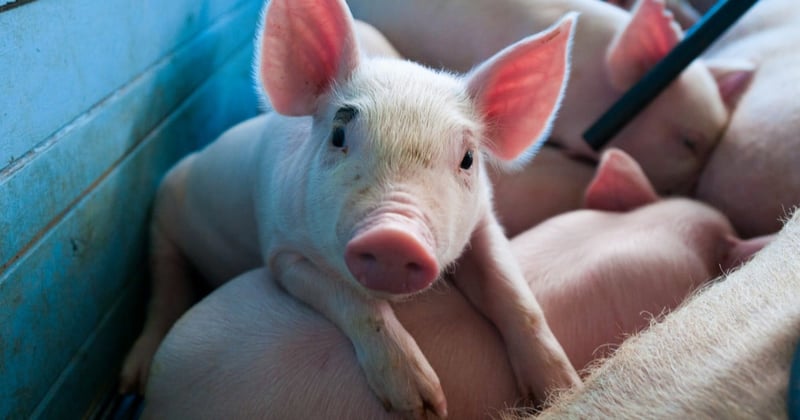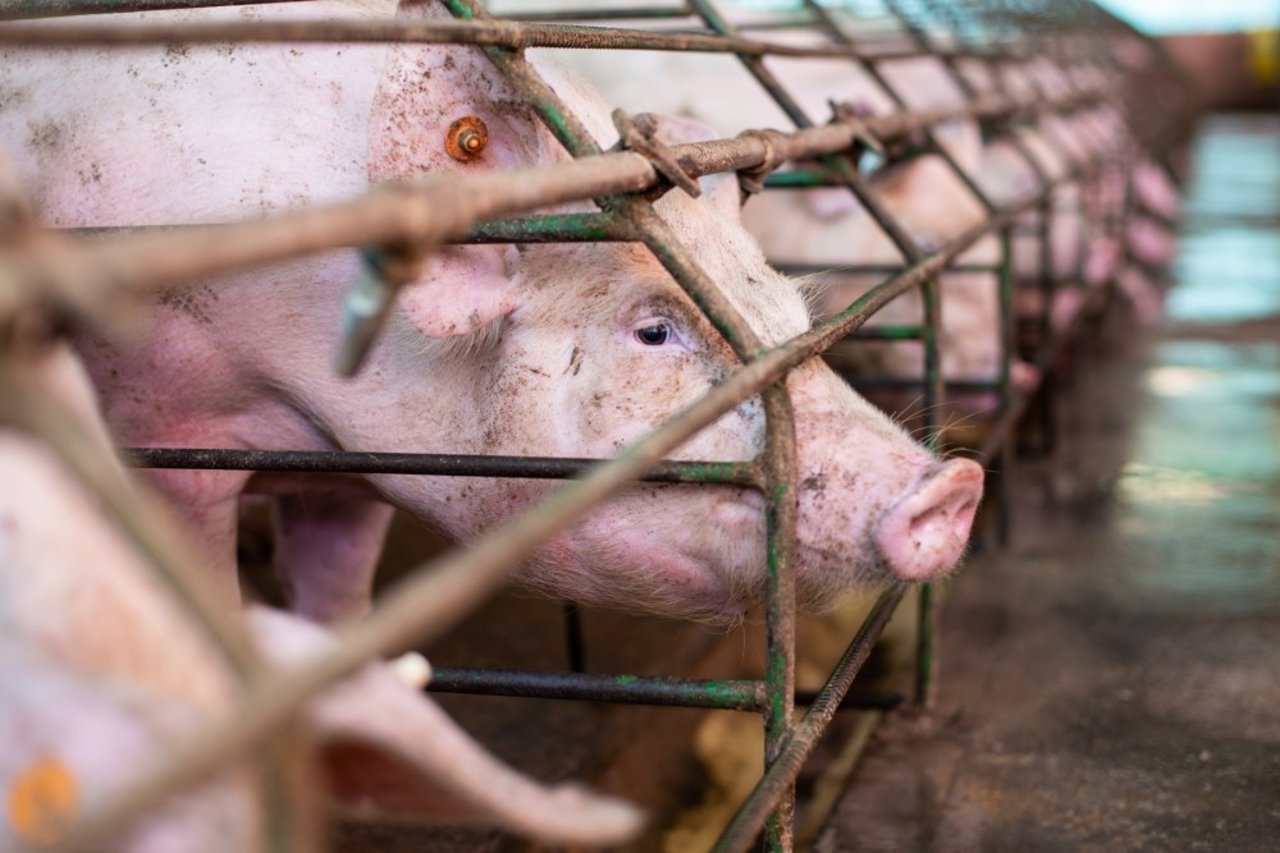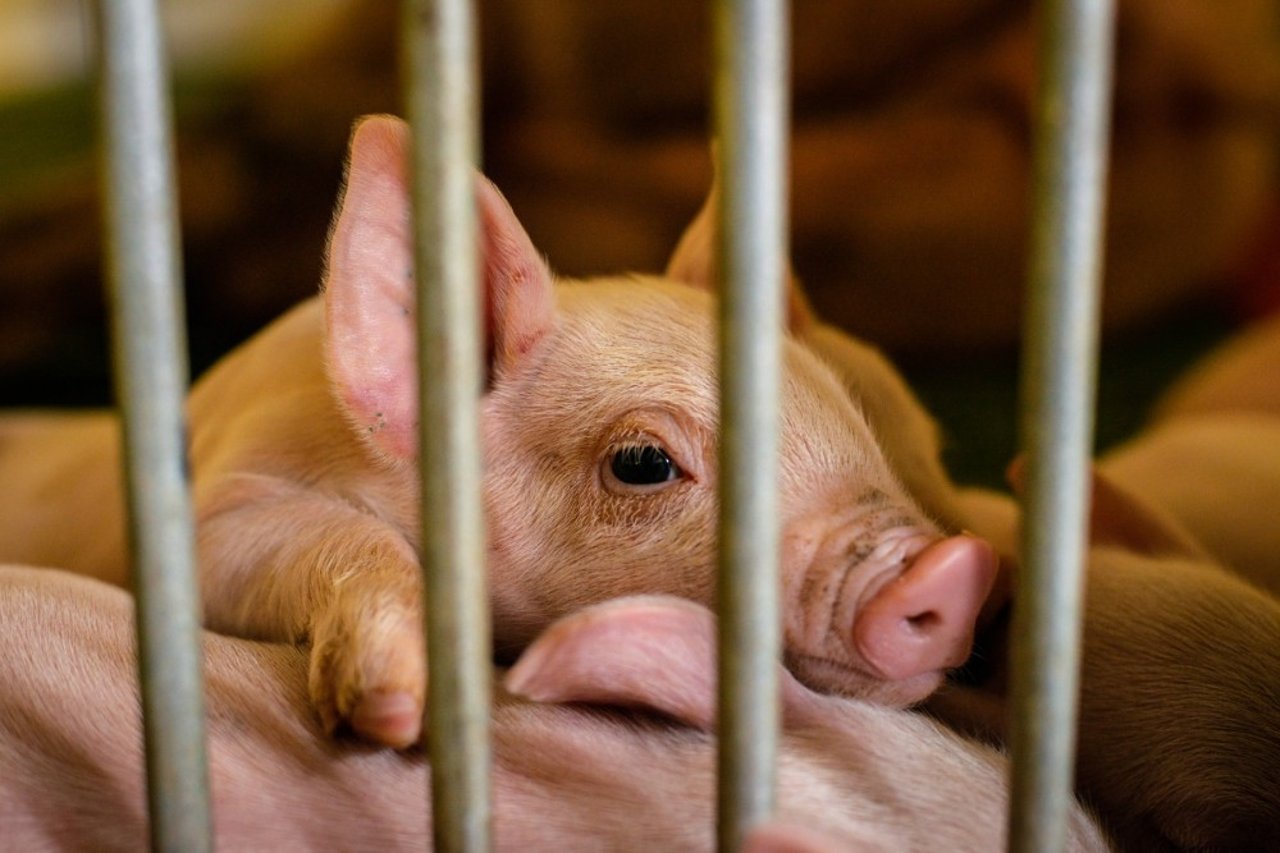
An interview with Emi Kondo, World Animal Protection’s global multimedia manager, who visited an intensive pig farm in Brazil.
Emi Kondo, World Animal Protection’s global multimedia manager, has traveled the world gathering powerful images and stories of our work to share with our generous supporters. Disaster zones, wild and farmed animals in distress, and difficult animal rescues have all been captured by Emi’s lens. Not surprisingly, these events have all taken their toll on her emotions. But Emi explains that nothing prepared her for her shocking first visit to an intensive pig farm in Brazil:
“I remember just walking in, and the first thing I noticed was the terrible smell, thick with ammonia, burning my nose, my eyes, catching my throat. And then came the understanding that the smell was because the hundreds of mother pigs in small cages in front of me were forced to do all the necessities of their lives–urinating, defecating–in the same place they were eating. They had to because the farming system doesn’t allow them to move around.”
As Emi set to work taking close-up pictures to document their suffering, she recalls the distress of looking into the mother pigs’ eyes.
“They all looked like they didn’t have life in their eyes–it was like they were gone from the world already. I asked the farmed animal expert I was with why they looked like this. Her answer was so distressing that I have never forgotten it. She said: ‘It’s known as learned hopelessness. The pigs have learned to not have hope for the future because there is no escape from the conditions they live in’.”
Pigs held in crates on a factory farm.
On this visit, Emi also saw ‘stereotypies’ in pigs for the first time. These are repetitive behaviors that are common among many captive animals stressed by the unnatural conditions in which they are forced to live.
“The pigs who didn’t look completely lifeless were chewing the cage bars in front of them over and over again in the same repeating pattern. Foam was dripping down their mouths. I was told they do this because it is like their brains begging them to have an activity: ‘Do something, do anything so your brain doesn’t die.’ To see them do that just broke my heart. It was really hard to see what these systems are forcing on animals.”
Telling the real story
Confronted with such horrendous suffering, Emi explained that she quickly understood how important her work would be in opening people’s eyes to factory farming.
“So many people are so removed from farming that their views of farms are cute little red barns, green grass, white fences, and happy animals. The shock is huge when you enter a factory farm and see, hear, and smell the distress humans inflict.
“Since joining World Animal Protection, I’ve also learned so much from our experts about animal sentience and behavior–how animals feel emotions just like we do. So whenever I’m in the field, that’s what I'm looking for, capturing these glimpses of feelings and behavior with my camera. In this way, I can help people understand and make the connection that it is wrong to confine and treat animals in this way.”
During her visit, Emi photographed piglets being born. Under normal circumstances, new life is associated with hope, but not on a factory farm. She explains the births were difficult to witness because the pigs were still caged–unable to move freely, unable to turn around. And after birth, the piglets were separated from their mothers by more bars.
“They could only get close to her to feed, and she could not move to interact with them, to nuzzle them, to protect them from us, for example–to do the things mothers would normally do.
“I was given a newborn piglet to hold. She was beautiful, with soft eyes and perfect skin–she should have been such a joy to hold, but I could only feel great sadness. I knew the lives these piglets would have and what the production processes would do to them. I also knew that under normal circumstances, allowed to move and behave naturally, this piglet’s mother would have been fiercely protective and not let me–a stranger–hold her baby.
“The next day, I photographed the terrible pain inflicted on two-day-old factory-farmed piglets just like the one I had held. They were castrated, their tails were docked, and their teeth clipped–all without anesthetic. The squealing and pain were terrible to hear and see.”
Inflicting suffering and unhappiness
Emi explains that most of the workers she has spoken to on factory farms are not happy in their jobs. They report that the depressing environment based on inflicting suffering causes them distress and that they feel trapped.
“They say things like ‘We don't want to do this anymore…These are not the kind of jobs we want to have. But these are the only jobs we have available in the region’.”
Throughout her time with World Animal Protection, Emi has completed photographic assignments at around 15 intensive pig farms, and she says it never gets easier, but now she knows what to expect.
Emi says she will continue to capture the lives of farmed animals to capture their sentience, their personalities, and their feelings. Her commitment after 10 years at World Animal Protection is undiminished.
“It’s always sad to visit these farms and see these animals. We all want to save every single one. But when we are on assignment it’s not always possible. I need to keep reminding myself about the bigger picture and how their stories will raise awareness and bring the reality of how they live to more people. I’m determined to create an understanding in people of why the factory farming system must end–to show what it means, so they mobilize against it… There are no red barns…no white fences… no green grass…only animals suffering and learned hopelessness.”

